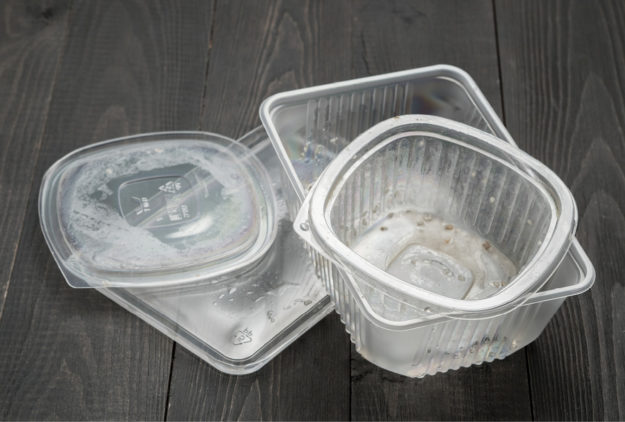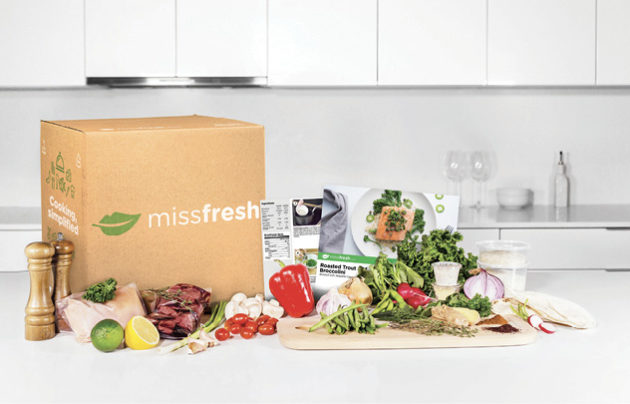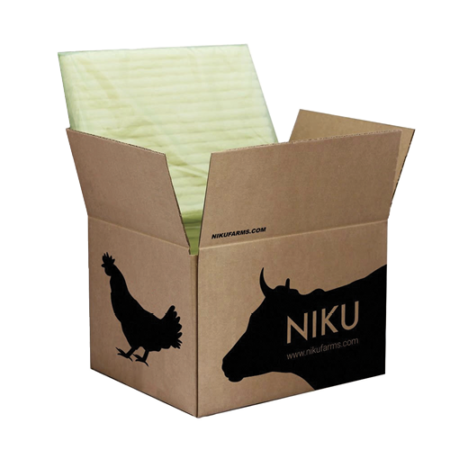
The cost of convenience
Food in Canada
Packaging Sustainability environment MissFresh WasteConvenient food options can reduce food waste, but packaging waste needs greater focus

As consumers’ schedules have become busier than ever, meal planning has become less of a priority. Consumers are looking for healthy, convenient solutions for their meals. Not surprisingly, meal kit and food delivery services are growing in popularity. A study from market research company NPD Group found that the Canadian meal kit industry has doubled in size since 2014 and will be a $400 million industry within the next year.
Although only 13 per cent of Canadians have used meal kits, 42 per cent said they have interest in trying one. Another convenience Canadians are interested in is having their groceries delivered straight to their doorstep. A survey by Canada Post found that 86 per cent of respondents would like their groceries delivered directly to their homes.
Grocery stores have caught on to this trend. Metro offers MissFresh meal kits in store and other grocery chains, such as Walmart and Loblaws, offer grocery delivery or “order online and pick up in store” services. Meal and grocery delivery services have created a solution for consumers’ busy lives, but is it a cost to the environment?
While such services have taken the guesswork out of dinner and can result in less food waste, such convenience can result in a large amount of packaging waste. However, food delivery service companies are starting to find new solutions for reducing packaging waste.

One such company is NIKU Farms, an Ontario e-commerce meat company that brings livestock farmers and consumers looking for ethically-raised meat together. Local farmers raise, slaughter and package the meat on-site, and then ship straight to the customer.
NIKU Farms made it their goal to find environmentally friendly packaging, which led them to Green Cell Foam insulation in Michigan. Green Cell Foam is made from non-GMO cornstarch, which can be recycled, composted, burned or even washed down the drain.
But finding an environmentally-friendly solution wasn’t an easy task for the meat delivery service.
High cost of green packaging
“There’s not really many companies that are making packaging like this. We really struggled to find anyone in Canada that would be able to make it for us. It took us a long time to source,” said Jake Goldberg, co-founder of NIKU Farms.
“When we did, we actually requested to get samples and we took it around to a few manufacturers, locally and within the greater Toronto area, to see if they would be able to make anything like this. It’s not anywhere on their time horizon right now.”
Green Cell Foam insulation will keep the product cold for over 40 hours, which is the same for Styrofoam packaging.
“Shipping Styrofoam boxes was never really an option for us, we wanted to focus on making sure that everything we do is sustainable and as environmentally friendly as possible,” said Goldberg.
Styrofoam can take over 500 years to breakdown, while Green Cell Foam breakdown is instantaneous. Due to its high price tag, Green Cell Foam isn’t as widely used as traditional packaging options. Goldberg estimates Green Cell Foam costs about 50 to 70 per cent more than traditional insulated packaging.
Efforts to reduce waste
Due to the nature of meal kits, the kit comes with plenty of packaging. After consumers place their order online, within a few days a box arrives with ingredients that are individually packaged and kept cool with a freezer pack. Some meal kit companies have reduced their packaging in efforts to reduce waste.

Montreal-based MissFresh is the first meal kit company to offer a no box and paper packaging option in Canada. The meal kits are delivered in a reusable bag, and MissFresh has looked into using reusable containers for their ingredients.
“In May 2018, we started a green box initiative and did a pilot project to start delivering all of our meal kits in reusable bins,” said Marie-Eve Prevost, CEO of MissFresh. “In May of this year, we rolled it out to most of the Quebec region and we plan on rolling it out further in Ontario. Eventually, it will be a consignment model throughout Canada.”
Prevost said they offer reusable icepacks but can’t reuse the containers due to food safety concerns. MissFresh also offers a paperless option for their recipes in efforts to reduce waste further.
Even without the extensive efforts of meal kit companies to reduce waste, meal kits produce less CO2 emissions compared to traditional grocery shopping.
Meal kits produce higher amounts of packaging compared to items purchased at the grocery store. However, meal kit ingredients are pre-portioned which results in less food waste.
A study in the journal Resources, Conservation & Recycling found that the average grocery store meal produces 8.1 kilograms of CO2 while meal kits produce 6.1 kilograms of CO2 per meal.
Emissions from meal kits can vary depending on the food ordered. The study, Comparison of Life Cycle Environmental Impacts from Meal Kits and Grocery Store Meals also found that “grocery store meal emissions exceed those for meal kits by 28 per cent for the salmon, 23 per cent for the chicken, 124 per cent for the pasta, and 43 per cent for the salad. Emissions for the meal kit cheeseburger are 15 per cent higher than those for the grocery store.”
Food waste was accounted for when emissions were calculated. Food waste from grocery stores counts for 10 per cent of meal emissions, compared to two per cent emissions from meal kits.
In addition to food waste, meal kit and grocery delivery services cut emissions through delivery methods. The supply chain order for a meal kit starts on a farm, shipped to a processing and packing facility, then transported to a distribution centre or to a consumer’s home. The grocery store supply chain has the same steps but it includes being transported from distribution to the store, where consumers use last-mile transportation to get their food from the store to their home.

There is a reduction in emissions when consumers order groceries to their homes. The study found that grocery home delivery uses 0.25 to 0.96 kilograms of CO2 per order compared to 1.17 kilograms of CO2 per order, which assumes consumers are using their own cars to make shopping trips. When the food is delivered to a consumer’s home, transit routes can be planned to allow multiple deliveries in the same area.
This is also dependant on the company making the food delivery. For example, NIKU Farms removes a few steps in their supply chain. All of NIKU Farms’ meat is grown, processed and packaged at the farm. Consumers receive their packages straight from the farm, which cuts out distribution centres or any extra transportation steps. In addition, their farms are within 200 kilometres of Toronto, further reducing emissions from transportation.
Companies have created methods to fit into consumers’ lifestyle demands. With this, companies have to be mindful of food and packing waste when creating innovative products. This can be challenging in the food space due to shelf life and freshness. Food wrapped in plastic may have a longer shelf life, but that plastic will build up in the landfill. 
Print this page